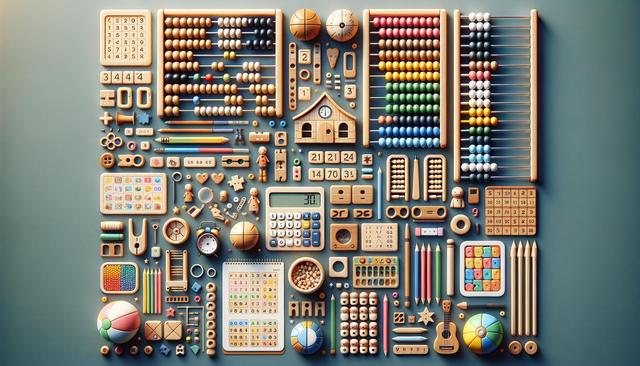Making Learning Fun: Educational Games for Kids
Educational games for kids combine fun with learning, helping children develop essential skills while staying engaged.

Why Educational Games Matter in Early Development
In the early years, children learn best through play. Educational games provide a structured environment where kids can explore concepts such as numbers, letters, shapes, and social interactions in a natural and enjoyable way. These games are designed to align with developmental milestones, offering age-appropriate challenges that stimulate critical thinking and creativity. By integrating learning into play, educational games help young learners build a strong foundation for academic success without the pressure of traditional teaching methods.
Research has shown that playful learning can improve memory retention and problem-solving skills. For example, games that involve sorting objects by size or color can enhance cognitive development, while storytelling games encourage language growth. Additionally, multi-sensory games—those that incorporate visual, auditory, and tactile elements—can be particularly effective for children with different learning styles.
Types of Educational Games for Different Learning Areas
There is a wide variety of educational games available that target specific areas of learning. These games cater to different subjects and skill levels, making it easier for parents and educators to find suitable options for various age groups. Some popular categories include:
- Literacy games – Focus on reading, spelling, and vocabulary development.
- Math games – Teach number recognition, counting, addition, and subtraction.
- Science games – Introduce basic scientific concepts and critical thinking.
- Geography games – Help kids learn about maps, countries, and cultures.
- Social-emotional games – Encourage empathy, cooperation, and communication.
By choosing games that align with a child’s interests and educational needs, learning becomes more personalized and motivating. These games not only reinforce classroom instruction but also help children explore new topics in a fun and low-stress environment.
Digital vs. Physical Educational Games
Both digital and physical educational games have unique benefits. Digital games are often interactive and adaptive, offering immediate feedback and customized levels of difficulty. These features can be especially valuable for tracking progress and identifying areas where a child may need additional support. Many apps and online platforms use gamification elements—like points, badges, and levels—to keep kids engaged and motivated.
On the other hand, physical games, such as board games, card games, and puzzles, promote hands-on learning and social interaction. These types of games are excellent for developing fine motor skills, fostering teamwork, and encouraging face-to-face communication. Ideally, a balanced mix of both digital and physical games provides a comprehensive learning experience that supports different developmental needs.
Choosing the Right Educational Games
Selecting the right educational game depends on several factors, including the child’s age, interests, and learning goals. It’s important to look for games that offer:
- Clear educational objectives
- Age-appropriate content and challenges
- Engaging visuals and sounds
- Opportunities for feedback and progress tracking
- Safe and ad-free environments (for digital games)
Parents and educators should also consider how a game fits into a child’s routine. For example, short, interactive games might be ideal for younger children with shorter attention spans, while older kids might benefit from more complex games that require strategic thinking and problem-solving.
Reading reviews or trying demo versions can also help in making informed decisions. Involving children in the selection process can further increase their interest and ownership of their learning journey.
Encouraging Learning Through Play at Home
Incorporating educational games into daily routines at home is a practical way to reinforce learning outside of school. Creating a playful learning environment doesn’t require expensive materials—it can be as simple as using household items for counting games or storytelling sessions. Parents can set aside dedicated time for game-based learning and participate alongside their children to make the experience more interactive and bonding.
Some tips for integrating educational games at home include:
- Set a consistent game time each day or week
- Rotate games to maintain novelty and challenge
- Combine games with outdoor activities for physical development
- Celebrate small achievements to build confidence
With the right approach, educational games can become a valuable part of a child’s daily life, supporting academic growth while nurturing curiosity, creativity, and a love for learning.
Conclusion: Supporting Lifelong Learning Through Play
Educational games for kids offer an engaging way to build essential skills while making learning enjoyable. Whether digital or physical, these games can support various areas of development, from literacy and math to social-emotional skills. By choosing games that align with a child’s interests and educational needs, parents and educators can foster a positive and effective learning environment. As children grow, incorporating educational play into their daily routines helps nurture a lifelong love of learning and exploration.